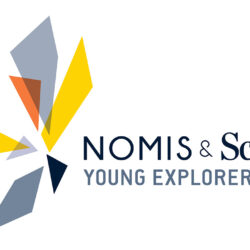 Impact
Impact How Social Sciences are Converging with STEM
This post first appeared on the LSE Public Policy Blog, and is kindly reposted here with their permission.
Much less is known about the development of the social sciences as a complete discipline group than about the previously dominant STEM (science, technology, engineering and mathematics) discipline group. Patrick Dunleavy, Simon Bastow and Jane Tinkler set out some key findings from their new book, published by SAGE, ‘The Impacts of the Social Sciences’, identifying five key trends that are causing the old social sciences versus physical science divide to dissolve. With the advent of ‘big data’ and e-science across the board, the social sciences are converging strongly on a ‘rapid advance/moderate consensus’ model previously characteristic only of the STEM disciplines.
One of the most surprising things we learnt in our latest research project was how little has ever been written in a systematic way about the social sciences as a whole. Of course, the ‘chaos of the disciplines’ (that Andrew Abbott wrote about) is amply documented in hundreds of histories of this or that individual academic subject. Our book includes 119 charts and tables, half of which show discipline-specific data. Yet there is no passage of text longer than a few lines about any individual discipline. Instead we pursue a relentlessly ‘broad front’ picture of the social sciences as a whole discipline group.
Even defining what are to count within the social sciences is problematic, still less to obtain data that reliably encompass the discipline group. For instance, the Higher Education Statistics Agency and other official bodies, have no coherent or consistent statistics organized at discipline group level. Nor are there any clear or persuasive official checklists of what subject count as social sciences – a perplexing gap indeed. For better or worse, then we constructed our own inclusive definition of the discipline group, set out in brief in our first picture (Figure 1) below.
Figure 1 – Defining social science
What is the logic of our listing? Every social science focuses on constantly shifting human behaviours; conscious that human beings have an innate and un-erodible capacity to change what we do in response to being told why we act as we do, or how we are expected to act in future. No social science produces immutable laws that once established last unchanged. And despite the apparatus of proofs and lemmas found in some mathematicized sub-disciplines, no social science propositions can be proven logically – without depending on a usually extensive and always contestable repertoire of assumptions and ‘primitives’ (such as the concept of what a ‘rational actor’ will or must do). All social science generalizations are inherently probabilistic, none are determinate, and all depend on large and baggy ceteris paribus clauses.
Every social science must handle an inescapable tension between knowledge advanced by the reductionist research tactic of focusing down on simple processes while ‘controlling’ for more and more factors; and the recognition that all social processes operate in complex, multi-causal environments, where hundreds or thousands of influences flux and interact with each other to shape any given social or behavioural outcome, and where the same outcome can eventuate through multiple diverse causal pathways.
As a result of all these features, every social science has a research process that is essentially cumulative, largely missing the ‘breakthrough’ discoveries or ‘lone genius’ insights on which public images of the physical sciences and technological disciplines still focus. Only a tiny percentage of social science research results in patents (for which embedding in physical products remains essential), and the vast bulk of university social scientific achievements are solely new (or partly new) ideas. They cannot be copyrighted, protected by intellectual property rights nor used to build scaleable products or comparative advantage for firms in the way that physical technologies often may. And despite many social scientists lusting after the outward trappings of ‘normal science’ practices, social science disciplines in the past operated in ways that are a long way off what Randal Collins calls the ‘high consensus, rapid discovery’ model that has served the physical sciences so well since the mid-nineteenth century.
The impact frame we use asks about the ways in which social science subjects resonate (or not) with business, government, civil society or the media. Although ‘impact’ discourse has unpalatable bureaucratic origins in many ways, none the less the value of this frame is that it unfailingly throws all the inherently shared features across the discipline group into a tightly focused spotlight and addresses some critically important aspects of contemporary change in the social sciences.
For any societal research to be successfully applied in public or organizational decisions it must be timely, produced speedily, capturing the salient features of a situation and behaviours that may shift quickly in response to new factors, or interaction with previously separate phenomena. All applied and impactful academic knowledge must also be ‘translated’ from single-discipline silos; ‘bridged’ and integrated with the insights of other disciplines in the social sciences or beyond in the applied and human-focused ‘physical’ sciences; and assimilated into a joined-up picture so as to adequately encompass real world situations. Research advances and insights must also be communicated or transferred to non-academic people and organizations, and their lessons mediated, deliberated and drawn out in useable ways.
In the modern world the transformations of information systems and now scholarship itself via digital changes condense and accelerate many of these necessities, creating a vastly extended set of interfaces between academia and business, government and civil society; allowing the direct and open access publication and broadcasting of academic research and ideas without the intermediation of conventional publishing or media systems; and greatly speeding up the potential tempo of knowledge production and transfer. Again the impacts agenda speaks directly to these potentially common, civilization-wide changes that now occupy a central place in the evolution of modern academia.
One of the most aspects that emerges most clearly from our book is that the traditional polarity that ever since Comte has contrasted the social sciences with the physical (or natural) sciences is a busted flush. The common scientific character of the social sciences set out above makes a nonsense of the innumerable misunderstandings and boundary drawings between the social sciences and STEM disciplines, exposing ever more clearly their roots in the counter-productive creation of academic in-groups and out-groups – on both sides of the now dissolving divide.
Our second graphic (Figure 2) embodies an argument made at far greater length in the book that the salient distinctions in focus and content across the discipline groups now focus on the differences between three foci:
- Human-dominated systems are the complex creations of our advanced industrial civilization and now global mode of production. Although the social science play a critical role here, so too do dozens of STEM disciplines and sub-disciplines, especially across medicine and health sciences, all aspects of engineering and information technology (IT). Most key avenues for social science advance here involve ever closer integration with these and other similar STEM disciplines, and the development of joint advances (see below).
- Human-influenced systems encompass almost all other aspects of how our globalized planet operates. Many areas of social science cover these systems and connect with STEM disciplines, especially in the areas of Earth-bound natural systems, most of which are clearly human-influenced. For instance, global warming and climate change reflect the cumulative impacts of human interventions, and any realistic approach to mitigating climate change is integrally bound up with the difficulties of securing the social, economic and political action on reform. Finally
- Natural or abstract systems cover all physical and natural processes that are clearly not human-influenced, most of which are off-planet. The pure analysis of completely abstract systems might also be included here, yet as G. F Hardy famously noted any effort to find a non-useful area of mathematics seems doomed to failure.
Figure 2: How the social sciences, STEM and other disciplines feed into the study of human-dominated and human-influenced systems in the UK
Source: Bastow, Dunleavy and Tinkler, The Impact of the Social Sciences, (2014), Ch.1.
As Figure 2 shows, the STEM disciplines have historically been by far the largest grouping in the UK, and cornered the largest share of all research funding. Yet the increasing role of the social sciences is clear – not least because 78 per cent of our economy is based on services, for which the social sciences have major and immediate relevance, although STEM innovations also fuel important areas of what Cusumano calls ‘productizing’ services growth.
To document the increasing joint relevance of the social and STEM sciences in the UK’s development is a task too lengthy to undertake here in a blog and we refer readers to the detailed narrative in our book. However, we can offer two small tokens to support our claim that the convergence described above is happening.
First, our final graphic (Figure 3), deriving from our analysis of a detailed database of academics, compares the main social science and humanities disciplines (in turquoise) with a few STEM disciplines (in orange) used for comparison only. This is not an exhaustive STEM list and we have not included some large areas, not least biosciences. Nevertheless, the analysis shows that social sciences tend to be more interdisciplinary than STEM, with inherently more ‘sciency’ disciplines, such as human geography or social psychology, comparatively high. At the extremes of the graph we find more traditional humanities subjects (on the left) and more ‘natural system’ oriented sciences (on the right) – although there are also recent signs that even history and legal-ethical philosophy are increasingly making connections with STEM subjects.
Figure 3 – Signs of interdisciplinary integration across the social sciences, STEM, and humanities, by discipline
Source: LSE Public Policy Group dataset of 360 academics
Second, we can point to many very strong contemporary developments of the social sciences as a discipline group that signal a growing together with parts of the STEM disciplines’ approach, and a pooling of what the science part of social science now means. The epigraph for our whole book is John Gerring’s famous comment that: ‘No escape is possible from broader inter-disciplinary standards if the enterprise of social science is to prove useful to humanity’. And at last that commonality of purpose is ever-clearer not just in the common qualities of the social sciences set out above but in a range of new developments such as:
- The shift to systematic review, imported from health sciences and medicine. After years of under-citation of literature (which has depressed social science citation rates way below STEM disciplines) and casual (cite-you-like) near-anarchy in what literature social scientists cover, still sadly prevalent in the most siloed disciplines, like economics), change towards better cumulating and utilizing all available knowledge (in real time) is imminent.
- Randomized control trials and experimentation (again imported from medicine) increasingly define the new ‘gold standard’ in social science. Linked to big data and behavioural policy research with electronically implemented RCTs on transactional data means that we can cash out the value of research immediately. And we can cumulate research impacts and deliver in real time, not the old, languid academic timescales in the social sciences shaped by the longitudinal survey orientation.
- ‘Big data’ analyses are seeing software engineering and maths-based approaches increasingly rapidly displacing the ancient social science approaches for milking meaning out of small and under-powered datasets that still dominate old-fashioned methodology textbooks. Using unobtrusive and non-reactive data is also increasingly extinguishing the traditional social science orientation towards survey-based reactive data, as Helen Margetts recently argued here.
- Modes of science and social science communication that are ‘shorter, better, faster, free’ have revolutionized what modern digital scholarship means and how it is conducted – as the whole dynamic community around this blog illustrates.
There is an obvious convergence here with the e-science trends recently enumerated by Luc Soete of MaastrichtUniversity:
‘“e-science” or … “science 2.0” [has created] new forms of scientific output, such as nano-publications, data and code; a vertical disintegration of the [scientific] value chain; a greater role for inductive methods (everything becomes a Genome Project); a scaling up of serendipity at global level with big linked data, collaborative annotation, social networking and knowledge-mining detecting unexpected correlations on a massive scale; better science with reproducible and truly falsifiable research findings; an earlier uncovering of mistakes; more productive science reusing data and products, crowd-sourcing of work and reducing time-to-publication
And the speedy growth and advance of the open science movement is beginning to spill over too into the still rather nascent open social science movement (still opposed by all-too many professional associations though). The development of ‘citizen science’ and ‘networked science’ similarly will spill over – in time – into ‘citizen social science’ that could at last move citizens from being the subjects of social science towards being ever more important agents of or active partners in knowledge-creation.
The book also makes a strong case for believing that all the social sciences, as a whole discipline group, are now moving significantly (and in historical terms) rapidly towards a version of Randall Collins saw as the essential success of the ‘physical’ sciences. This future might be called a ‘rapid advance plus moderate consensus’ model, where increasingly academic prestige and status attaches to incrementally and speedily pushing the frontiers of knowledge and impact-relevant practice. This implies that over time progressively lesser status in the social sciences will attach to simply re-theorizing re-stirring the pot of theoretical controversy, although controversy over method, purposes and theory will not die out (any more than in STEM disciplines).
The social sciences will likely never attain the STEM-like model of intellectual work still admired by (now old fashioned) social scientists suffering from acute ‘physics envy’, usually evidenced by bizarre, over-mathematicized apparatuses masquerading as ‘theory’. Better by far to envisage a ‘rapid advance/moderate consensus’ social sciences group that emulates engineering or medicine or IT in its approach, leaving lots of room still for contingency and for joined-up focusing on the ever-changing challenges and problems of human-dominated and human-influenced systems.
This blog draws in part on The Impact of the Social Sciences: How Academics and Their Work Make a Difference (Sage, 2014, published today). You can view data visualisations that appear in the book here. The book will be launched with a roundtable at LSE on 29 January at 6.30pm. Unfortunately all tickets are sold out, but there will be an overflow room (plus welcome to the after-party. You can follow remotely also via a free web cast, twitter stream and later podcast of the event – details to follow.
Note: This article gives the views of the author, and not the position of the Impact of Social Science blog, nor of the London School of Economics. Please review our Comments Policy if you have any concerns on posting a comment below.
Patrick Dunleavy is Co-Director of Democratic Audit, Chair of the LSE Public Policy Group, and a Professor of Political Science at the LSE.
Simon Bastow is a Senior Research Fellow at the LSE Public Policy Group. He recently published a book with Palgrave Macmillan ‘Governance, performance and capacity stress: The chronic case of prison crowding’.
Jane Tinkler has been PPG Manager since September 2005. She is also actively involved in research projects undertaken by PPG. Previous to this, she was Managing Editor of the journals, Political Studies and Political Studies Review for six years. She also was a Research Fellow in the School of Public Policy, University College London. Her first degree was in psychology and business at Leeds University and she later took an MSc at Birkbeck College, University of London. She has published in UK public policy


























































































